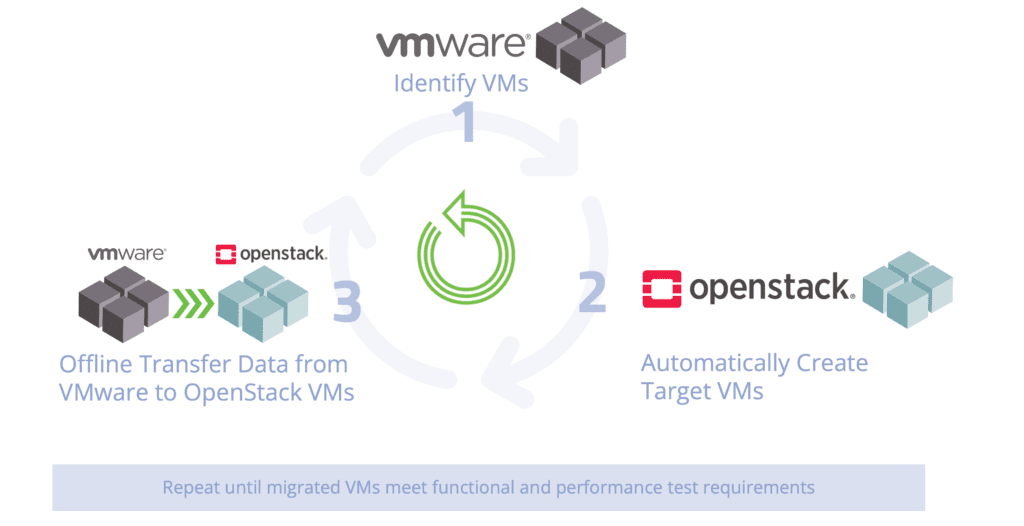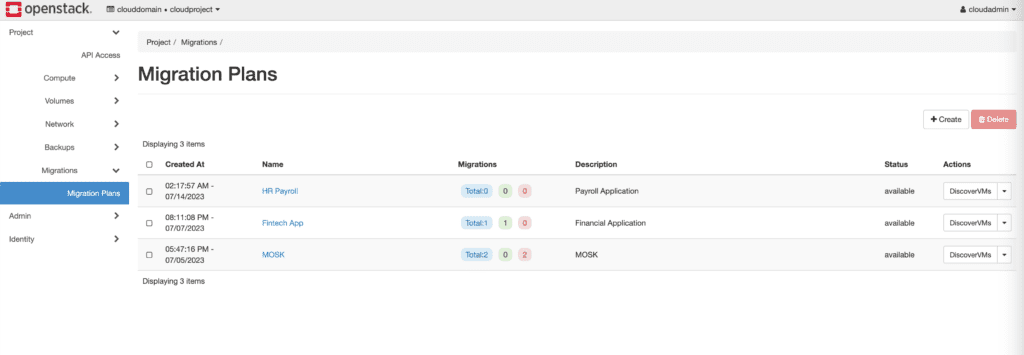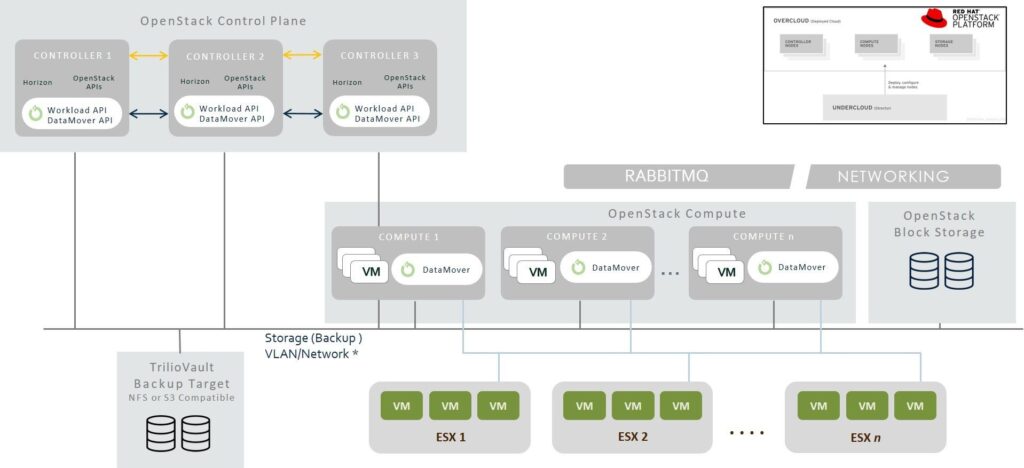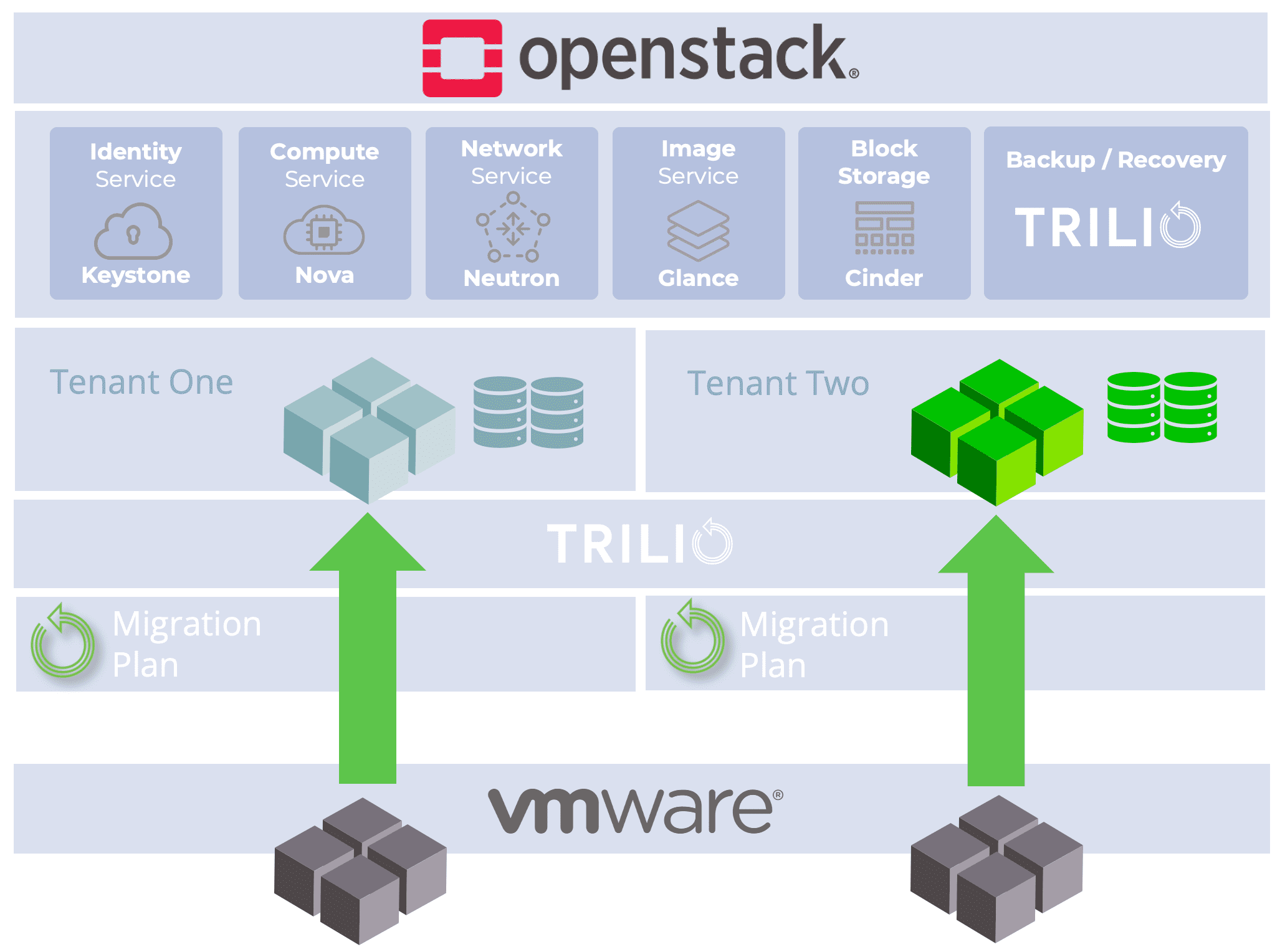Introduction
Many organizations are looking to modernize their datacenters and migrate from technologies like VMware to OpenStack. Although historically, VMware has been a dominant virtualization platform, trusted by many organizations for running mission-critical applications, the rapidly-evolving technology landscape has already delivered the next-generation of virtualization technologies. OpenStack and Kubernetes are setting the stage for edge computing and Hybrid & Multi-Cloud to emerge as industry standards.
Migrating from VMware to OpenStack offers compelling benefits:
Cost Savings: OpenStack significantly reduces licensing fees.
Vendor Independence: Avoid vendor lock-in and make choices based on how they favor your business.
Innovation and Collaboration: Open-source fosters rapid advancements.
Scalability and Elasticity: Automatically scale resources on demand
Multi-Cloud Support: Manage multiple clouds and datacenters from one interface.
Integration with Open Source: Seamlessly integrate with Kubernetes and other open-source tools.
Community Support: Active community provides resources and expertise
By embracing OpenStack, you gain cost savings, flexibility, scalability, and a vibrant community, empowering your cloud infrastructure.
Migrating VMs from VMware to OpenStack has traditionally been a people intensive and complex process requiring an “expert intensive “ investment.
Organizations must engage in detailed planning, consult experts, and consider utilizing tools and technologies to facilitate smooth migrations. Because each migration scenario is unique, it has been difficult to come up with best practices and /or automation. This blog is about how Trilio’s Intelligent Recovery https://trilio.io/ Platform can help simplify and automate the migration process. Check how we can help your business migrate off of VMware to an OpenStack Platform.
Watch this video to learn more about Easy OpenStack Migration with TrilioVault
Trilio's Approach to VMware to OpenStack Migration

Architecture
Native Service to OpenStack
Trilio’s backup and recovery solution is an OpenStack native service similar to Nova, Cinder, Glance, etc. This software-only solution can be deployed using OpenStack distribution-specific DevOps scripts. For example, Trilio’s solution is native to the RHOSP platform and can be deployed and managed using Red Hat Director.
Highly Scalable
We extended Trilio’s architecture to support migration at scale. Since Trilio migrates the VM from VMware ESXi to OpenStack compute node, the solution scales with your VMware/OpenStack without suffering from performance bottlenecks.
Self-Service and Inline Migration
The process of migration, usually involves moving virtual machines from a source platform to a target platform, however the strategy to achieve this should be considered carefully.
If the migration process is initiated from the target platform, it is called inline migration. Trilio advocates inline migration as it helps map organizational structures such as datacenters/clusters/folders in VMware to regions/domains/projects in OpenStack.
A project owner with sufficient privileges to their VMware resources can migrate the VMs to their project. If every project owner can migrate their resources from VMware, it provides better control to cloud architects to orchestrate the migration.
If the migration process is initiated from an outside source or target platform, it is called out-of-band migration. Out-of-band demands a centralized approach and places constraints on how cloud architects can design their OpenStack clouds.
Horizon Dashboard Plugin
A very intuitive tenant dashboard for the tenant to manage their migrations. If you want to migrate to KubeVirt, Red Hat’s MTV solution can be helpful.

Command Line Interface
(myenv3.8) murali@controller:~/sandbox/vmmig/horizon$ workloadmgr --help | grep migra
migration-create Execute a migration plan.
migration-delete Delete the migration.
migration-plan-create Creates a migration plan.
migration-plan-delete Remove a migration plan.
migration-plan-get-import-list Get list of migration_plans to be imported.
migration-plan-import Import all migration plan records from backup store.
migration-plan-show Show details about a migration plan.
migration-plans-list List all the migration_plans of current project.
migration-show Show details about migration of the migration plan
migrations-list List all the migrations for the migration plan.
Migration APIs look and feel like OpenStack API. Each tenant can source their cloud rc and start using migration cli commands. CLI also helps users to extend their Ansible scripting for migration.
Migration Types
Trilio migration functionality supports three types of migrations
Dry-run
Dry-run lets users create the VMs on OpenStack with storage volumes, networking, and security groups attached. It does not migrate VMs from VMware to OpenStack. It is a handy feature for users to test VMs and their interconnectivity before migrating VMs.
Cold Migration
Cold migration shuts down the VMware VMs and migrates the VMs to OpenStack. Depending on the size of the data to migrate, cold migration can take minutes to hours to complete, and during the entire duration, the applications are unavailable. Cold migration is more disruptive than warm migration.
Warm Migration
Warm migration leverages VMware snapshot and changes block tracking functionality to migrate VMs with less disruption. It first takes the VM snapshot and copies the full snapshot data to OpenStack. It then shutdowns the VM, takes another snapshot of the VM, copies the blocks that were changed since the last snapshot, and reboots OpenStack VMs. So warm migration incurs less disruption compared to cold migration.
Conclusion
Trilio’s support for migrating VMware VMs to OpenStack is recognized as an industry-leading solution. Its scalability and ability to be deployed organization-wide scale make it a valuable choice for businesses. The self-paced approach provided by Trilio allows application owners to experiment with migration options and gain confidence before performing the final migration. In the context of businesses transitioning from vendor lock-in to open-source technologies, Trilio’s migration feature can be a helpful tool in accelerating the transition process.


